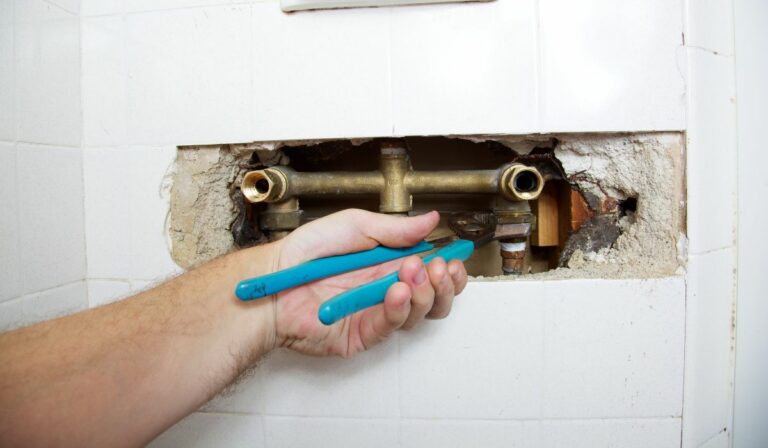How To Reseal Bathtub
Knowing how to reseal your bathtub is essential for maintaining a watertight, clean, and attractive bathroom space. Over time, the seal around your tub can crack, peel, or develop mold, leading to water leaks and potential damage to your walls and floors. But don’t worry, resealing your bathtub is a straightforward DIY task that you can master with the right guidance. This article walks you through the signs that indicate it’s time to reseal, the tools you’ll need, and a detailed step-by-step process to get the job done right.
Signs You Need To Reseal Your Bathtub
It’s important to catch the warning signs early before water damage becomes a costly problem. Here are the most common indicators that your bathtub seal needs attention:
- Visible Cracks or Gaps: Check the caulk or sealant around your tub for cracks, peeling, or missing sections.
- Water Leakage: Notice any water pooling outside the tub or damage on adjacent flooring or walls?
- Mold or Mildew Growth: Persistent black or green spots along the edges can mean the sealant is compromised, allowing moisture to seep in.
- Loose Tiles or Wall Damage: Warping, bubbling paint, or loose tiles near the tub indicate water infiltration.
If you recognize any of these signs, it’s a clear signal to reseal your bathtub promptly to avoid more severe damage.
Tools And Materials Required For Resealing
Before you start, gathering the right tools and materials will make the job more efficient and ensure a professional finish. Here’s what you need:
- Caulk: Use a high-quality bathroom-specific silicone caulk that resists mold and mildew.
- Caulk Gun: Allows for smooth and controlled application.
- Utility Knife or Razor Blade: To remove old caulk and smooth edges.
- Painter’s Tape: Helps create clean, straight lines.
- Caulk Smoothing Tool or Your Finger: For finishing the bead neatly.
- Rubbing Alcohol or Mineral Spirits: To clean and prepare the surface.
- Clean Cloths or Paper Towels: For wiping and cleanup.
- Gloves: Protect your hands during the process.
Having these ready will save time and help you achieve a tight, lasting seal.
Preparing The Bathtub Surface For Resealing
Preparation is key to a durable seal. Follow these steps carefully:
- Remove Old Caulk: Use your utility knife or razor blade to gently scrape away all previous caulk, ensuring no residue remains.
- Clean the Area Thoroughly: Clean the joint and surrounding surfaces using rubbing alcohol or mineral spirits to eliminate soap scum, mold, and oils.
- Dry Completely: Make sure the area is fully dry before applying new caulk: any moisture can compromise adhesion.
- Tape Off the Edges: Use painter’s tape on both sides of the joint for a crisp, professional line and to prevent caulk from sticking to unwanted areas.
Taking these prep steps seriously will make a world of difference in the seal’s longevity and appearance.
Step-By-Step Guide To Resealing Your Bathtub
How To Apply Caulk Correctly
- Load your caulk tube into the caulk gun, cutting the nozzle tip at a 45-degree angle to match the width of the gap.
- Slowly and steadily apply a continuous bead of caulk along the seam, maintaining consistent pressure.
Tips For Ensuring A Smooth And Durable Seal
- Immediately after applying, smooth the bead with a caulk smoothing tool or your wet finger for an even finish.
- Remove painter’s tape carefully before the caulk dries to avoid pulling away fresh sealant.
- Allow the caulk to cure fully according to manufacturer instructions, typically 24 hours, before using the tub.
- Ventilate the bathroom well during and after application to speed up drying and reduce fumes.
These steps will help you achieve a neat, watertight seal that stands up to daily use.
Common Mistakes To Avoid When Resealing
Avoid these pitfalls to save time and reduce frustration:
- Skipping Surface Prep: Applying new caulk over old residue or dirt weakens adhesion.
- Applying Too Much or Too Little Caulk: Excess creates a messy look: too little leaves gaps.
- Not Smoothing the Caulk: Rough edges are not only ugly but can collect dirt and degrade faster.
- Ignoring Drying Time: Using the tub too soon can ruin your hard work.
- Using the Wrong Caulk: Always select caulk designed for bathrooms, silicone-based and mold-resistant.
By steering clear of these mistakes, your resealing project will be much smoother and the results more reliable.
Maintenance Tips To Prolong Your Bathtub Seal
Once you’ve resealed your bathtub, keep it in great shape longer by following these maintenance tips:
- Regular Cleaning: Use mild, non-abrasive cleaners to prevent buildup and mold growth.
- Keep It Dry: After use, wipe down the seal to reduce moisture sitting too long.
- Inspect Periodically: Check the seal at least twice a year for signs of wear or damage.
- Prompt Repairs: Address any minor cracks or separation immediately before they worsen.
These simple habits will extend the life of your seal and protect your bathroom from costly water damage.
Conclusion
Resealing your bathtub might seem daunting, but with the right preparation, tools, and techniques, you can tackle it confidently and effectively. Paying close attention to the signs that your seal needs replacing, following the step-by-step application process, and avoiding common errors will help you achieve a professional-quality finish. Plus, by maintaining your seal properly, you’ll enjoy a clean, safe, and leak-free bathroom for years to come. Ready to give your bathtub a fresh seal? Grab your caulk gun and get started, your bathroom will thank you.

